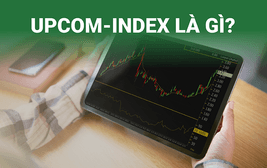In order to fully understand the stock market, investors must spend a lot of time learning from how to start, how to invest,... Especially to learn important knowledge. as securities terms. And surely anyone who participates in this market must have heard the term "reference price". So what is the actual reference price? How is it calculated on the floors? Let's follow PHS to learn more through the article below!
What is the reference price in securities?
For the HSX/HNX trading floor, the reference price is the closing price of the previous most recent trading day, that is, the strike price of the last matching order of the previous trading day. The reference price is also the basis for calculating the highest price (ceiling price) and lowest price (floor price) in that trading day.
Unlike the HSX/HNX exchange, the UPCOM reference price is the average of the even-lot trading prices according to the order matching method in the previous day.
The role of the reference price
-
Compare stock prices in two consecutive trading sessions
If the stock price is green, it means that the trading price that day is higher than the reference price, equivalent to an increase in price, the stock index is rising. And if the stock price is red, it means that the trading price is lower than the reference price, which is similar to the price falling, the stock index is falling. If the yellow stock price is equal to the reference price. From here, investors can make decisions to buy/sell stocks of interest.
-
Play the role of determining price ceiling and floor price
The ceiling price is calculated by taking the reference price plus a percentage of the fluctuation range of the reference price. The floor price is calculated as the reference price minus the percentage of the fluctuation range of the reference price.
How to calculate the reference price
In each exchange, the way to calculate the reference price is different:
- At HOSE: The reference price of stocks and fund certificates being traded is the closing price of the previous most recent trading day (except for some special cases).
- On HNX: The reference price is determined by the closing price of the previous trading day (except for special cases).
- At UPCOM: The weighted average price of the transaction prices executed by the continuous order matching method of the last previous trading day (except for special cases).
In addition, on the HNX/HSX, the reference price at the ex-rights date (ie the trading day on which stocks, closed-end fund certificates and ETF certificates are not entitled to dividends or attached rights) are determined according to the principle of taking the closing price of the latest day to adjust according to the value of dividends or the value of rights.
In some sessions where the closing price cannot be determined, the operator may apply another method of determining the reference price with the approval of the State Securities Commission.
Notes when trading the reference price
On the ex-rights date, that is, the trading day on which the fund certificates and shares are not entitled to dividends or attached rights, the reference price will take the closing price of the latest day to adjust according to the right value. or dividends.
In case the stock exchange encounters a problem, the State Securities Commission will approve them to apply other methods to determine the reference price.
Summary
Stock investment has become an investment field that many people care about and participate in, the basic knowledge is something that all investors must understand. With the information about the reference price that we have just shared, hopefully investors will be equipped with more knowledge to achieve high efficiency on the floor. If you want to open an account to start participating in the stock market, open it now at PHS. With more than 16 years of experience in the field of financial investment, PHS believes that it will be a solid companion for you.











